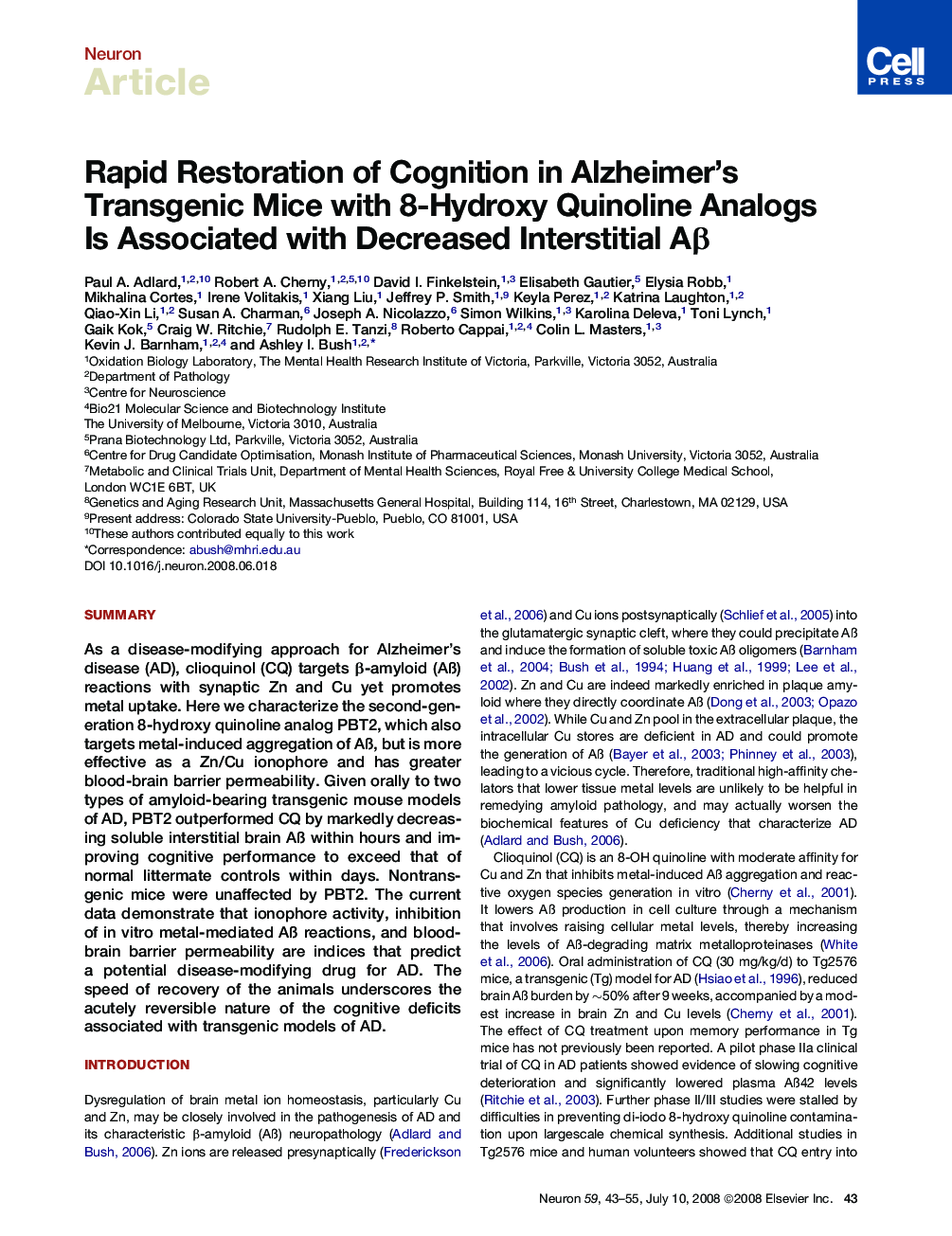| Article ID | Journal | Published Year | Pages | File Type |
|---|---|---|---|---|
| 4322306 | Neuron | 2008 | 13 Pages |
SummaryAs a disease-modifying approach for Alzheimer's disease (AD), clioquinol (CQ) targets β-amyloid (Aß) reactions with synaptic Zn and Cu yet promotes metal uptake. Here we characterize the second-generation 8-hydroxy quinoline analog PBT2, which also targets metal-induced aggregation of Aß, but is more effective as a Zn/Cu ionophore and has greater blood-brain barrier permeability. Given orally to two types of amyloid-bearing transgenic mouse models of AD, PBT2 outperformed CQ by markedly decreasing soluble interstitial brain Aß within hours and improving cognitive performance to exceed that of normal littermate controls within days. Nontransgenic mice were unaffected by PBT2. The current data demonstrate that ionophore activity, inhibition of in vitro metal-mediated Aß reactions, and blood-brain barrier permeability are indices that predict a potential disease-modifying drug for AD. The speed of recovery of the animals underscores the acutely reversible nature of the cognitive deficits associated with transgenic models of AD.
